Residential lighting design is more than deciding between LED or incandescent or determining where to place your favorite lamp. It is a nuanced blend of art and science, an integral component of home design that enhances aesthetic appeal, boosts mood, and even improves functionality. This blog post will dive into the fascinating world of residential lighting design and illuminate the fundamental principles, techniques, and best practices to transform your living space into a beautifully lit home. So, switch on your curiosity, and let’s enlighten our understanding of the subtle yet powerful impact of lighting in our homes.
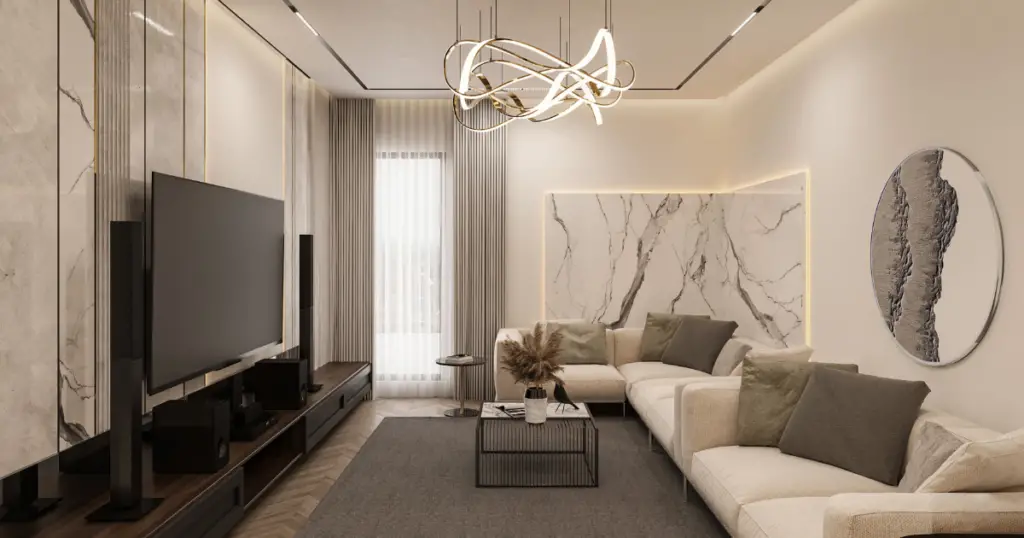
Definition of residential lighting design
Residential lighting design is planning and implementing a lighting scheme that meets a home’s occupants’ functional, aesthetic, and psychological needs. It involves creating a well-balanced mix of natural and artificial light to illuminate different areas in a home, such as living rooms, bedrooms, kitchens, bathrooms, etc.
The importance of residential lighting design
Good lighting design can make or break the ambiance of a home. It is about providing enough light to see and creating an atmosphere that reflects the occupants’ personality and lifestyle. The proper lighting can transform a room from dull and lifeless to warm and inviting, making it more functional, comfortable, and visually appealing.
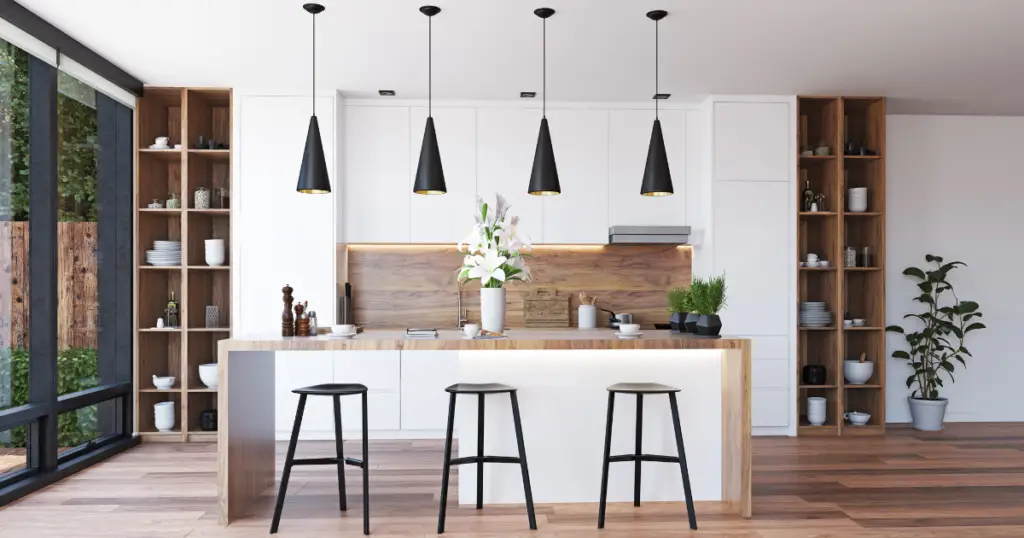
Understanding the basics: Types of lighting
There are three main types of lighting – Ambient, Task, and Accent.
Ambient Lighting
Ambient or general lighting is a room’s primary light source. It provides overall illumination to make a space comfortable and safe to navigate. Examples include ceiling lights, pendant lights, chandeliers, etc.
Task Lighting
Task lighting is used to illuminate areas where activities such as reading, cooking, or working occur. It is typically brighter and more directed than ambient lighting, providing focused light to help with tasks. Examples include desk lamps, under-cabinet lights, etc.
Accent Lighting
Accent lighting adds drama and visual interest to a room by highlighting specific objects or architectural features. It creates contrast and depth in a space.
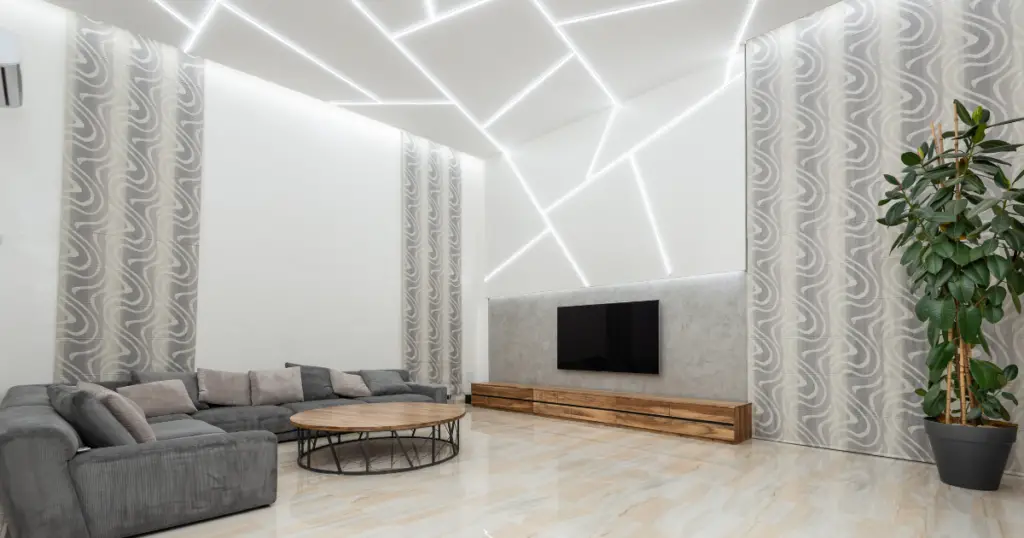
The Art of Residential Lighting Design
Understanding Space and Function
The first step in creating a lighting design plan is understanding the space’s purpose and function. Different areas in a home require different types of lighting, depending on their use.
- Living rooms: Soft and inviting lighting for relaxation and entertaining
- Bedrooms: Warm and cozy lighting for comfort and rest
- Kitchens: Bright and task-oriented lighting for cooking and food
Achieving Aesthetic Balance with Light
Light layering is the key to creating a balanced, visually appealing lighting design. It involves combining different types of lighting at various heights and angles to create depth, texture, and interest in a space.
Layering light also helps in articulating the aesthetics of a space by emphasizing the room’s structure, highlighting art or architectural elements, and creating desired moods. A perfectly balanced lighting arrangement marries function and design in a harmonious blend that complements the room’s decor. For instance, an elegantly placed table lamp can cast soft shadows that augment the cozy ambiance of a reading nook. Similarly, dramatic accent lighting can accentuate a painting, drawing attention and adding a splash of sophistication to the room. Understanding the play of light and shadows and using them to your advantage can significantly enhance the aesthetic appeal of your home.
Lighting Designers
A Lighting designer is a skilled professional who understands the complex interplay of art, science, and architecture in creating effective lighting schemes. They draw on their expertise in the behavior of light and its interaction with different materials, colors, and textures to create a specific mood or atmosphere. They work closely with homeowners, architects, or interior designers to evaluate a space, understand the client’s vision and needs, and create a comprehensive lighting plan. This plan considers factors such as room function, natural light availability, the right mix of lighting types, and possible energy efficiency. By utilizing their knowledge of the latest lighting technologies, fixtures, and controls, lighting designers can transform a space, enhancing its aesthetics and functionality.
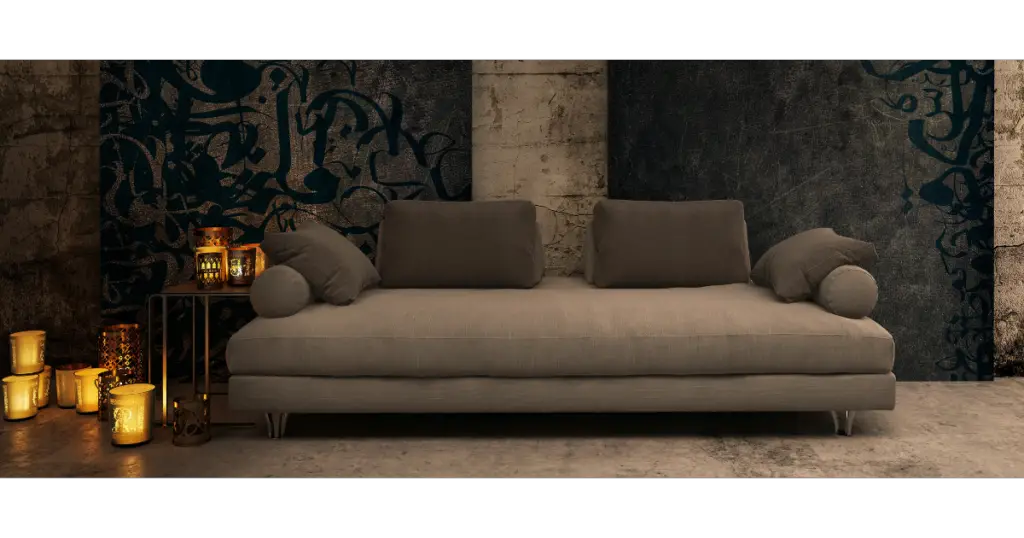
The Science of Residential Lighting Design
The Basics of Lighting – Lumens, Color Temperature, and CRI
Lumens
Lumens measure the total amount of visible light from a light source. The higher the lumen rating, the brighter the light. In residential lighting design, understanding lumens is crucial to correctly gauging how much light is needed in a space. For instance, a kitchen may require more lumens than a bedroom due to its function as a workspace.
Color Temperature
Color temperature, measured in Kelvin (K), determines the color of the light emitted from a source. Lower color temperatures (2000-3000K) produce a warm, inviting light with a reddish tint, ideal for living rooms and bedrooms. Mid-range color temperatures (3500-4100K) emit a bright, white light suited for kitchens and bathrooms. Higher color temperatures (4600-6500K) give off a cool, bluish light, perfect for task-oriented spaces like home offices.
Color Rendering Index (CRI)
The Color Rendering Index (CRI) gauges a light source’s ability to reveal the true colors of objects compared to a natural light source. CRI is rated on a scale from 1-100, with a higher score indicating that the light source will more accurately reflect colors. A CRI rating of 80 or higher is considered good for residential lighting.
Understanding these three parameters – Lumens, Color Temperature, and CRI – is crucial to the science of residential lighting design. They guide decisions about what type of lighting to use and where to create a functional, comfortable, and aesthetically pleasing living space.
Energy Efficiency in Residential Lighting
With growing energy conservation and sustainability concerns, residential lighting designers are increasingly incorporating energy-efficient lighting solutions. LED lights, for instance, consume less energy than traditional incandescent or fluorescent bulbs while providing the same amount of light. Smart lighting systems with sensors and timers can also reduce energy consumption by adjusting light levels based on natural light availability and room occupancy.
Technological Innovations in Lighting Design
The lighting industry continuously evolves, with technological advances providing new and exciting lighting solutions. From smart bulbs that can change color and intensity to tunable white lights that simulate natural light, homeowners now have a wide range of options to customize their home lighting. Some other notable advancements include:
- Wireless controls: The rise of wireless technology has enabled the creation of remote-controlled or voice-activated lighting systems, making it easier to adjust and personalize light settings.
- Human-centric lighting mimics natural daylight, providing health benefits such as improved mood, productivity, and sleep patterns.
- 3D printing: With the development of 3D printing technology, homeowners can now customize their light fixtures according to their unique design preferences.
Considerations of Interior Designers
Interior designers and architects play a crucial role in a space’s overall look and feel, and lighting is an essential element in their design process. By collaborating with lighting designers, they can achieve a cohesive look that integrates lighting with other design elements. They also consider factors like reflective surfaces, light levels, and glare control while selecting finishes, furniture, and fabrics.
For high-end design, there is often great consideration of architectural details and how their clients can distinguish their home site.
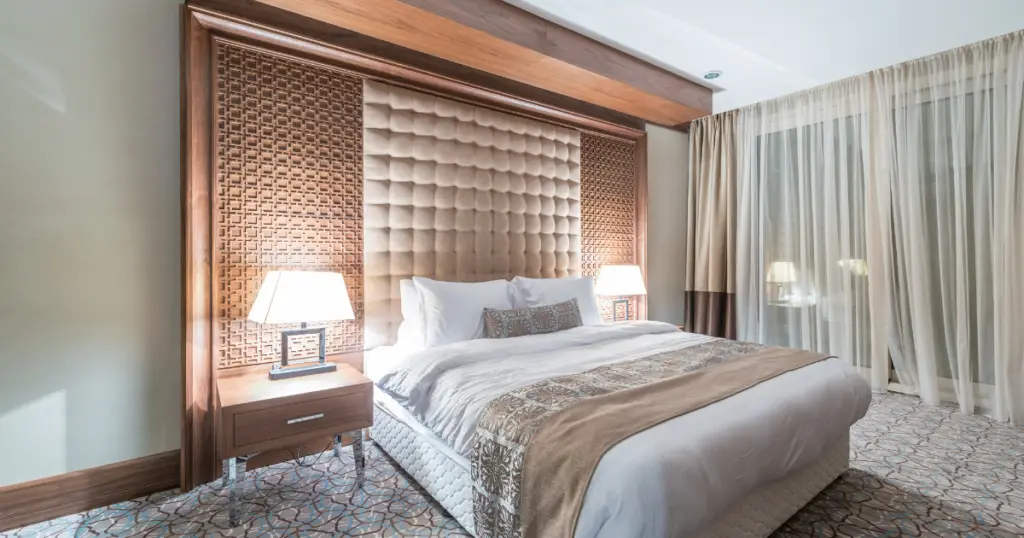
Practical Tips for Residential Lighting Design
Lighting Different Spaces – Living Room, Kitchen, Bedroom, etc.
Living Room
The living room is a multipurpose space for entertaining, relaxing, and sometimes even working. Layered lighting can provide flexibility for these varying needs. Ambient lighting, like ceiling fixtures, provides general illumination, while task lighting, like table and floor lamps, supports activities such as reading. Accent lighting can highlight architectural features or artwork.
Kitchen
The kitchen is a workspace requiring bright, shadow-free light. Recessed or track lighting can illuminate the entire room, while pendant lights or under-cabinet lighting provide task lighting for countertops. Consider installing dimmer switches for ambient lighting to adjust light levels for mood-setting when the kitchen is not in use.
Bedroom
The bedroom is a personal sanctuary where comfort is paramount. Opt for warm lighting to create a relaxing atmosphere. Bedside lamps with dimmable features are perfect for reading, while soft ambient light can be achieved through ceiling fixtures. Consider accent lights to highlight artwork or other features.
Remember, every space is unique, and the best lighting design enhances functionality while reflecting the room’s overall aesthetic.
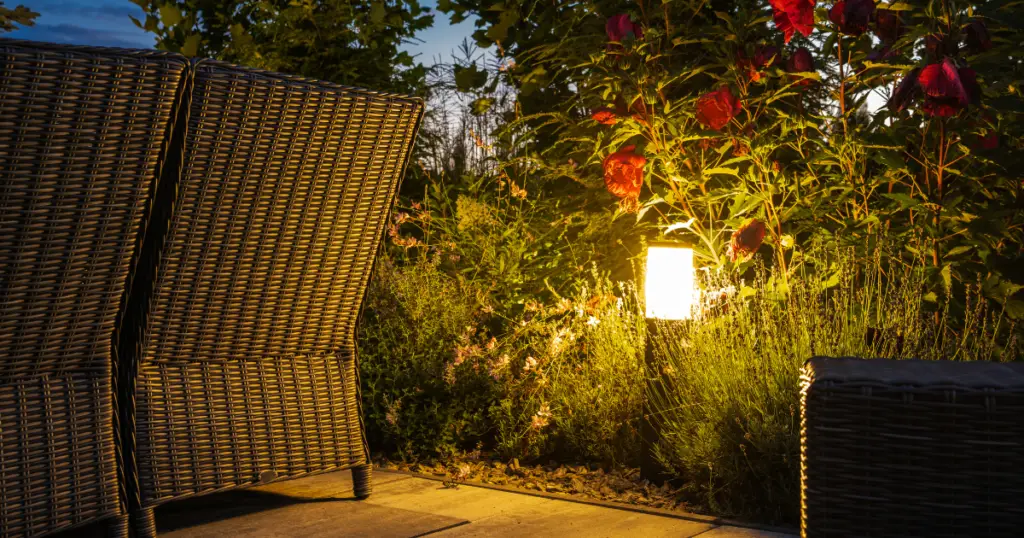
Choosing the Right Light Fixtures
Choosing the right light fixtures is a crucial aspect of residential lighting design. Several factors should be considered when selecting fixtures for your building or project.
- Space and Location: Evaluate the size, ceiling height, and purpose of the room. This will help to select fixtures of appropriate dimensions and style. For example, a large chandelier could overwhelm a small room, while a tiny pendant light may get lost in a spacious living room.
- Design Aesthetic: The fixture should harmonize with the room’s overall decor style. A fixture with a modern design might seem out of place in a classically styled room.
- Lighting Needs: Consider the type and amount of light required. Ambient, task, and accent lighting have different requirements and thus necessitate different fixtures.
- Installation: Assess the feasibility of installation. Hardwired fixtures require more complex installation than plug-in ones. Consider consulting a professional to ensure safe and correct installation.
- Shape: The fixture’s shape can influence how light is distributed in the room. For instance, an open-bottomed pendant light will cast a concentrated pool of light on the area directly beneath it, while a globe-shaped pendant will disperse light more evenly throughout the room.
Remember, the goal of lighting design is to create a space that is functional, comfortable, and aesthetically pleasing. The right light fixture can significantly contribute to achieving this goal.
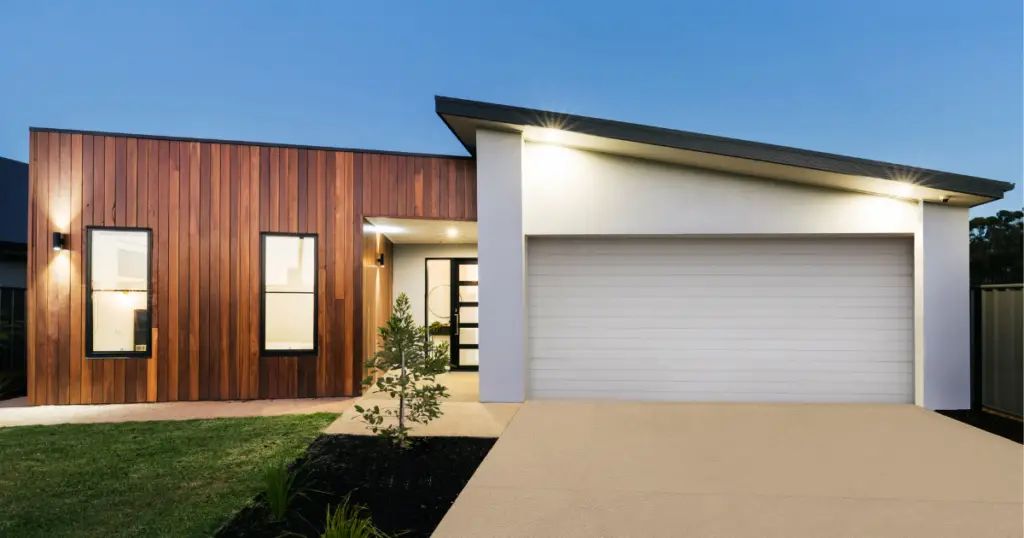
Professional Help vs DIY: Pros and Cons
When it comes to residential lighting design, homeowners often face the dilemma of opting for professional help or taking the do-it-yourself route. Each option has its own merits and drawbacks.
Professional Help
Pros:
- Expertise and Experience: A professional team has extensive knowledge about lighting design principles, current industry trends, and technological innovations. They can leverage this expertise to create a lighting design that is functional, aesthetically pleasing, and energy-efficient.
- Access to Resources: Professionals in the construction and lighting industry can access various resources and services. They can source high-quality light fixtures that suit your house’s needs and design aesthetic.
- Quality Assurance and Safety: Professionals adhere to industry standards and regulations, ensuring a safe and correct installation. They also provide warranties and after-sales service, offering peace of mind to homeowners.
Cons:
- Cost: Hiring a professional can be expensive. The cost often includes consultation fees, design fees, and installation charges.
- Less Personal Involvement: When you hire a professional team, you may not be involved in every step of the process. This could result in a design not completely in line with your preferences.
DIY
Pros:
- Cost-Savings: DIY can be a more cost-effective solution. You can save on labor costs and potentially source materials at a lower price.
- Personal Satisfaction: DIY projects allow you to put your touch on the design. The satisfaction of creating a space yourself can be immense.
Cons:
- Time-Intensive: DIY projects can be time-consuming. Balancing DIY work with other responsibilities can be challenging.
- Lack of Expertise: Without professional training, you may overlook important aspects of lighting design. This could lead to sub-optimal results or even safety issues.
In conclusion, choosing between professional help and DIY depends on various factors such as budget, time availability, and personal preference. It is essential to weigh the pros and cons carefully before deciding.
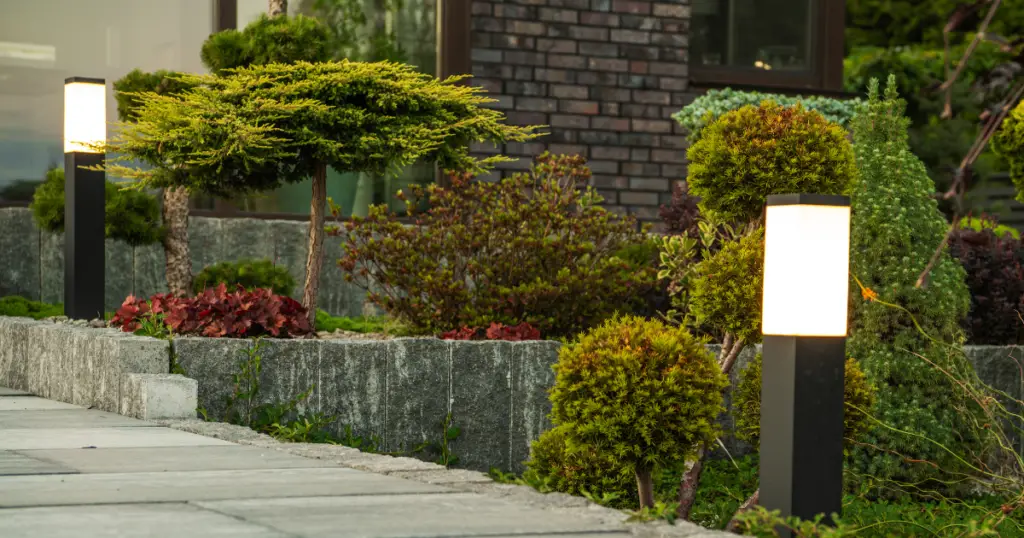
Conclusion
In the final analysis, residential lighting design is a complex process that requires careful thought and planning. It’s not merely about choosing attractive fixtures but also tailoring the lighting to each room’s specific needs and aesthetics. While you can take the DIY route and save on costs, the expertise and resources offered by professionals, particularly those renowned in the field, can result in a more refined, functional, and harmonious lighting design. Regardless of your path, a well-planned lighting scheme can significantly enhance your home’s comfort, functionality, and aesthetic appeal.
The Future of Residential Lighting Design
The future of residential lighting design is set to be shaped by both technological advancements and a growing emphasis on sustainable living. Smart lighting, a major game-changer, allows homeowners to control lighting remotely, adjust brightness, and even change colors based on their mood or the time of day. Voice-activated systems and motion sensors increase convenience and energy efficiency. On the sustainability front, the use of LEDs continues to rise, given their longevity and lower energy consumption. Solar-powered lighting systems are also gaining popularity, demonstrating a commitment to renewable energy sources. Moreover, integrating biophilic design elements, such as leveraging natural light, is expected to be a key trend, enhancing both energy efficiency and the overall wellness of the inhabitants. With these developments, the future of residential lighting design promises to be innovative, flexible, and green.
